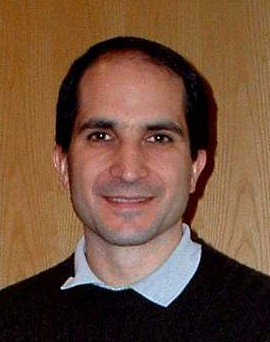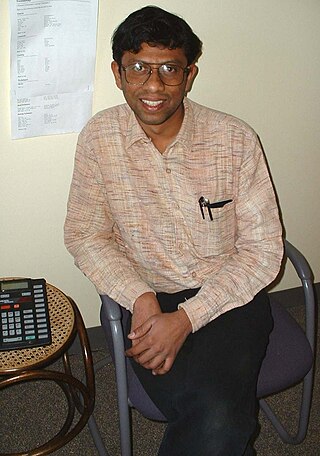The holographic principle is an axiom in string theories and a supposed property of quantum gravity that states that the description of a volume of space can be thought of as encoded on a lower-dimensional boundary to the region — such as a light-like boundary like a gravitational horizon. First proposed by Gerard 't Hooft, it was given a precise string-theory interpretation by Leonard Susskind, who combined his ideas with previous ones of 't Hooft and Charles Thorn. Leonard Susskind said, “The three-dimensional world of ordinary experience––the universe filled with galaxies, stars, planets, houses, boulders, and people––is a hologram, an image of reality coded on a distant two-dimensional surface." As pointed out by Raphael Bousso, Thorn observed in 1978 that string theory admits a lower-dimensional description in which gravity emerges from it in what would now be called a holographic way. The prime example of holography is the AdS/CFT correspondence.
M-theory is a theory in physics that unifies all consistent versions of superstring theory. Edward Witten first conjectured the existence of such a theory at a string theory conference at the University of Southern California in 1995. Witten's announcement initiated a flurry of research activity known as the second superstring revolution. Prior to Witten's announcement, string theorists had identified five versions of superstring theory. Although these theories initially appeared to be very different, work by many physicists showed that the theories were related in intricate and nontrivial ways. Physicists found that apparently distinct theories could be unified by mathematical transformations called S-duality and T-duality. Witten's conjecture was based in part on the existence of these dualities and in part on the relationship of the string theories to a field theory called eleven-dimensional supergravity.
In physics, string theory is a theoretical framework in which the point-like particles of particle physics are replaced by one-dimensional objects called strings. String theory describes how these strings propagate through space and interact with each other. On distance scales larger than the string scale, a string looks just like an ordinary particle, with its mass, charge, and other properties determined by the vibrational state of the string. In string theory, one of the many vibrational states of the string corresponds to the graviton, a quantum mechanical particle that carries the gravitational force. Thus, string theory is a theory of quantum gravity.
In theoretical physics, T-duality is an equivalence of two physical theories, which may be either quantum field theories or string theories. In the simplest example of this relationship, one of the theories describes strings propagating in a spacetime shaped like a circle of some radius , while the other theory describes strings propagating on a spacetime shaped like a circle of radius proportional to . The idea of T-duality was first noted by Bala Sathiapalan in an obscure paper in 1987. The two T-dual theories are equivalent in the sense that all observable quantities in one description are identified with quantities in the dual description. For example, momentum in one description takes discrete values and is equal to the number of times the string winds around the circle in the dual description.

Juan Martín Maldacena is an Argentine theoretical physicist and the Carl P. Feinberg Professor in the School of Natural Sciences at the Institute for Advanced Study, Princeton. He has made significant contributions to the foundations of string theory and quantum gravity. His most famous discovery is the AdS/CFT correspondence, a realization of the holographic principle in string theory.
In theoretical physics, the anti-de Sitter/conformal field theory correspondence, sometimes called Maldacena duality or gauge/gravity duality, is a conjectured relationship between two kinds of physical theories. On one side are anti-de Sitter spaces (AdS) which are used in theories of quantum gravity, formulated in terms of string theory or M-theory. On the other side of the correspondence are conformal field theories (CFT) which are quantum field theories, including theories similar to the Yang–Mills theories that describe elementary particles.
In mathematics and string theory, a conifold is a generalization of a manifold. Unlike manifolds, conifolds can contain conical singularities, i.e. points whose neighbourhoods look like cones over a certain base. In physics, in particular in flux compactifications of string theory, the base is usually a five-dimensional real manifold, since the typically considered conifolds are complex 3-dimensional spaces.

Andrew Eben Strominger is an American theoretical physicist who is the director of Harvard's Center for the Fundamental Laws of Nature. He has made significant contributions to quantum gravity and string theory. These include his work on Calabi–Yau compactification and topology change in string theory, and on the stringy origin of black hole entropy. He is a senior fellow at the Society of Fellows, and is the Gwill E. York Professor of Physics.

Shiraz Naval Minwalla is an Indian theoretical physicist and string theorist. He is a faculty member in the Department of Theoretical Physics at Tata Institute of Fundamental Research, Mumbai. Prior to his present position, Minwalla was a Harvard Junior Fellow and subsequently an assistant professor at Harvard University.

The black hole information paradox is a puzzle that appears when the predictions of quantum mechanics and general relativity are combined. The theory of general relativity predicts the existence of black holes that are regions of spacetime from which nothing — not even light — can escape. In the 1970s, Stephen Hawking applied the rules of quantum mechanics to such systems and found that an isolated black hole would emit a form of radiation called Hawking radiation. Hawking also argued that the detailed form of the radiation would be independent of the initial state of the black hole and would depend only on its mass, electric charge and angular momentum. The information paradox appears when one considers a process in which a black hole is formed through a physical process and then evaporates away entirely through Hawking radiation. Hawking's calculation suggests that the final state of radiation would retain information only about the total mass, electric charge and angular momentum of the initial state. Since many different states can have the same mass, charge and angular momentum this suggests that many initial physical states could evolve into the same final state. Therefore, information about the details of the initial state would be permanently lost. However, this violates a core precept of both classical and quantum physics—that, in principle, the state of a system at one point in time should determine its value at any other time. Specifically, in quantum mechanics the state of the system is encoded by its wave function. The evolution of the wave function is determined by a unitary operator, and unitarity implies that the wave function at any instant of time can be used to determine the wave function either in the past or the future.
Horațiu Năstase is a Romanian physicist and professor in the String Theory group at Instituto de Física Teórica of the São Paulo State University in São Paulo, Brazil.

Stephen Hart Shenker is an American theoretical physicist who works on string theory. He is a professor at Stanford University and former director of the Stanford Institute for Theoretical Physics. His brother Scott Shenker is a computer scientist.
In theoretical physics, the anti-de Sitter/quantum chromodynamics correspondence is a goal to describe quantum chromodynamics (QCD) in terms of a dual gravitational theory, following the principles of the AdS/CFT correspondence in a setup where the quantum field theory is not a conformal field theory.
Igor R. Klebanov is an American theoretical physicist. Since 1989, he has been a faculty member at Princeton University where he is currently a Eugene Higgins Professor of Physics and the Director of the Princeton Center for Theoretical Science. In 2016, he was elected to the National Academy of Sciences. Since 2022, he is the Director of the Simons Collaboration on Confinement and QCD Strings.

Rajesh Gopakumar is a theoretical physicist and the director of the International Centre for Theoretical Sciences (ICTS-TIFR) in Bangalore, India. He was previously a professor at Harish-Chandra Research Institute (HRI) in Prayagraj, India. He is known for his work on topological string theory.
Matthias Staudacher is a German theoretical physicist who has done significant work in the area of quantum field theory and string theory.
The Kerr/CFT correspondence is an extension of the AdS/CFT correspondence or gauge-gravity duality to rotating black holes.

In strong interaction physics, light front holography or light front holographic QCD is an approximate version of the theory of quantum chromodynamics (QCD) which results from mapping the gauge theory of QCD to a higher-dimensional anti-de Sitter space (AdS) inspired by the AdS/CFT correspondence proposed for string theory. This procedure makes it possible to find analytic solutions in situations where strong coupling occurs, improving predictions of the masses of hadrons and their internal structure revealed by high-energy accelerator experiments. The most widely used approach to finding approximate solutions to the QCD equations, lattice QCD, has had many successful applications; however, it is a numerical approach formulated in Euclidean space rather than physical Minkowski space-time.
The FRW/CFT duality is a conjectured duality for Friedmann–Robertson–Walker models inspired by the AdS/CFT correspondence. It assumes that the cosmological constant is exactly zero, which is only the case for models with exact unbroken supersymmetry. Because the energy density does not approach zero as we approach spatial infinity, the metric is not asymptotically flat. This is not an asymptotically cold solution.
Gary T. Horowitz is an American theoretical physicist who works on string theory and quantum gravity.







